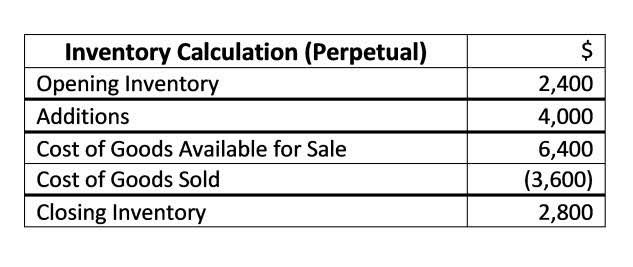
Programs may be deemed ineligible to participate in Title IV, HEA programs based on the provided set of rates. Under the rule, the current subpart G process now used for institutional termination actions will be used for program-specific termination actions (in the event an institution does not voluntarily withdraw that program). The Department would also constrain the discretion of a Department hearing official to hear any GE rule appeal, by requiring that official to terminate the eligibility of a GE program unless the official concludes that the Secretary erred in the calculation of the GE metrics. Prior to entering into an enrollment agreement, prospective students must acknowledge that they have viewed the information provided through the program information website established and maintained by the Secretary as described in 34 CFR § 668.43(d). The Department will administer and collect the acknowledgment from students through the program information website.

Regulatory Requirements for Financial Value Transparency and Gainful Employment (Updated Sept. 16,

After the required student level and program level reports are submitted to NSLDS, we’ll notify you if you need to take any action based on responses from NSLDS. We will also track each step of the process to ensure its completion and the ability to readily respond to audit requests. Because institutions report institutional debt owed by a student as of the day the student graduated or withdrew from the program, there is no difference between GE Programs and Eligible Non-GE Programs when reporting Total Amounts of institutional debt for a student. Only include students in your reporting for programs at your school for which they have received Title IV aid. If a student did not receive Title IV aid for any programs at your school, do not include them in your FVT/GE reporting. If a student received Title IV aid for Program A but, not for Program B, include that student in reporting for Program A, but not in reporting for Program B.
How do I navigate to “Graduated Status Reconciliation” on the Clearinghouse secure site?

If a proprietary institution acquires a liberal arts bachelor’s degree program (either by purchase, merger, or any other transaction) after January 1, 2009, the exception does not apply since the program was not continuously provided by the proprietary institution since that date. Therefore, the liberal arts program must lead to gainful employment in a recognized occupation to be eligible for Title IV aid and is considered a GE program. If a current or prospective student receives a warning but does not seek to enroll until more than 12 months afterward, the institution must again provide the warning unless the program has since passed both the D/E rates and EP measure for the two most recent consecutive years the metrics were calculated. A program fails the D/E rates if it fails both the annual D/E rate and the discretionary D/E rate. A program fails the annual D/E rate if it has a rate greater than 8 percent or if the denominator (median annual earnings) is zero and the numerator (median debt payments) is positive. A program fails the discretionary D/E rate if the rate is greater than 20 percent or if the denominator (median discretionary earnings) is negative or zero and the numerator (median debt payments) is positive.
- You can also use our secure site’s Student Look-Up tab to update these students or submit a separate Graduates Only file (see our Enrollment Reporting Programming & Testing Guide) using the same method you use to submit scheduled enrollment files (e.g., secure FTP).
- First, the Final Rule advances a new Financial Value Transparency policy intended to provide prospective students with consumer-minded data about important financial outcomes for individuals who complete Title IV programs.
- The Clearinghouse will leverage enrollment data for multiple award years to meet FVT/GE requirements for the Completers List, Student Level Report, and Program Level Report.
- Although subject to the same D/E and EP determinations as GE programs, the failure of a non-GE program — generally, a degree program at a public or private nonprofit institution — to satisfy those metrics will not result in loss of Title IV eligibility.
- Prior to entering into an enrollment agreement, prospective students must acknowledge that they have viewed the information provided through the program information website established and maintained by the Secretary as described in 34 CFR § 668.43(d).
- To increase transparency regarding higher education cost, financial aid, and outcomes for prospective students considering Title IV programs, the Final Rules seek to provide new consumer-minded information about the financial outcomes of individuals who complete a Title IV program.
How do I add missing Graduated (G) students to the Completers List?

Note that acknowledgment requirements do not apply if a program fails only the EP measure. An institution must determine whether it will use standard or transitional periods for reporting at the time that it first reports data to the Department. The choice of bookkeeping standard or transitional period must be made for the entire institution and cannot be changed once it has been selected. Schools that choose transitional reporting will use that reporting method for the first six years that the regulations are in effect. Schools that choose standard reporting will be expected to provide data for all the years during the cohort period.
What if my institution has two or more branches that are active with the Clearinghouse’s Enrollment Reporting service?
Essentially, this means that nearly EVERY participating Clearinghouse institution will be impacted by the FVT/GE legislation reporting requirements and should anticipate having to meet the reporting requirements by the deadline. The final rule establishes new institutional reporting requirements due no later than July 31 following the date these regulations take effect. After the initial reporting, for each subsequent award year, institutions would be required to report by October 1 following the end of the award year. A four-year cohort period for a qualifying graduate program would consist of the sixth, seventh, eighth and ninth award years prior to the year for which the most recent data are available at the time of the calculation.

After completing these additions, your institution will return the file to the Clearinghouse for review. Schools should report the total number of program Car Dealership Accounting graduates who attempted a licensure exam and the total number of program graduates who passed a licensure exam, as most recently reported to the institution’s accrediting agency. If your institution’s accrediting agency does not require the school to provide count of students who take a licensure exam, you should not provide a value (report a space) in those fields. Institutional grants and scholarships do not include funds that are provided to students by outside entities such as unaffiliated private organizations or individuals. They also do not include awards or other amounts provided to students that are not included in a student’s financial aid package as estimated financial assistance.
What is a non-GE program?
If the program has substantially equal payment periods, the institution divides the total tuition and fees for the program by the number of payment periods in the program. The institution would report the student as currently enrolled if the student was enrolled at the end of the award year. Note, however, that if an institution provides a credential for a non-degree postbaccalaureate teacher training program, the program is considered a GE program that is subject to the FVT/GE requirements. The program as described is neither a GE Program nor an Eligible Non-GE Program that the institution is required to report on. Only Title IV-eligible programs and, in some cases, previously-eligible programs are subject to the statutory and regulatory FVT/GE requirements.
- Beginning on July 1, 2026, an institution must provide a warning to students and prospective students if the GE program could become ineligible for the next award year based on its next calculated D/E rate or EP measure.
- If it is not possible to calculate or publish the EP measure for a program for an award year, the program would receive no result under the EP measure for that award year.
- The warning would be the only substantive content contained in those written communications, and the Department would mandate the wording of that warning in a future Federal Register publication.
- The final rule establishes new institutional reporting requirements due no later than July 31 following the date these regulations take effect.
- A four-year cohort period would consist of the third, fourth, fifth and sixth award years prior to the year for which the most recent earnings data are available at the time of calculation.
- These Frequently Asked Questions (FAQs) provide information and operational guidance on the requirements of the new Financial Value Transparency and Gainful Employment (FVT/GE) regulations.
Is my institution required to complete the “Attest to Qualifying Graduate Programs for AY 2023-2024” section?
- Programs that are not designed solely for transfer purposes and that lead to a recognized nondegree credential (usually a certificate or diploma) awarded by the institution are not included in the above exception.
- Detailed information is provided in the final regulations, and the Department plans to publish additional policy and operational guidance to support institutions in their implementation efforts.
- Our FVT/GE solution creates a new and flexible data intake model that will give your institution more options for how it submits data to the Clearinghouse.
- After your institution selects your cohort type (Standard or Transitional), our system will generate your cohort, separated by award year, for the applicable cohort period with enrollment information previously reported by your institution to Clearinghouse, using NSLDS’s prescribed logic.
- This feature will ensure that your institution’s reporting is as up-to-date and accurate as possible.
In order for a user with access to update this list, the Financial Aid Officer role and Submission Data or Submission Data Alternate roles are needed. financial transparency Contact your institution’s Clearinghouse User Administrator to be assigned either the FVT/GE Financial Aid Officer or FVT/GE Financial Aid Viewer role to receive the automated updates. If you participate in Clearinghouse FVT/GE, an automated email will be sent to users at your institution with the FVT/GE Financial Aid Officer or FVT/GE Financial Aid Viewer role notifying them that your Completers List is available for review.
- You can also sign up on our FVT/GE resource page to be notified when new releases of the Clearinghouse’s FVT/GE service become available.
- As the result of an R2T4 calculation, the institution must return $1,050 in Title IV funds.
- We’ll also update this FAQs page as we obtain additional clarity from Federal Student Aid (FSA) on FVT/GE technical requirements and specifications.
- Your institution can then use our secure site to access and update this list, as necessary — before we provide your updated list to NSLDS.
- An institution should be reasonably be aware of such private education loans and should include them in a student’s financial aid package.
- However, in subsequent years, the Department will include students from up to four award years prior to the reporting date to determine whether at least 30 completers are present in the program, and will publish a D/E rate for the program if there were 30 completers reported on in the four most recently completed award years.
First, all institutions offering a Title IV program will be subject to new FVT disclosures that require the posting of D/E rates and EP measures for all programs. Additionally, the GE rule creates an accountability framework to determine whether certain GE programs, as that term is defined in the Higher Education Act, remain eligible for participation in Title IV. As a matter of ongoing compliance, institutions must then continue to certify these requirements in their PPAs on an ongoing basis and maintain currency as to the list of eligible programs. An institution must update any certification within 10 days if there are any changes in approval for a program, or other changes that render an existing certification no longer accurate. For Title IV funds to disburse for a GE program, the program must be included on the list of the institution’s eligible programs.
Leave a Reply